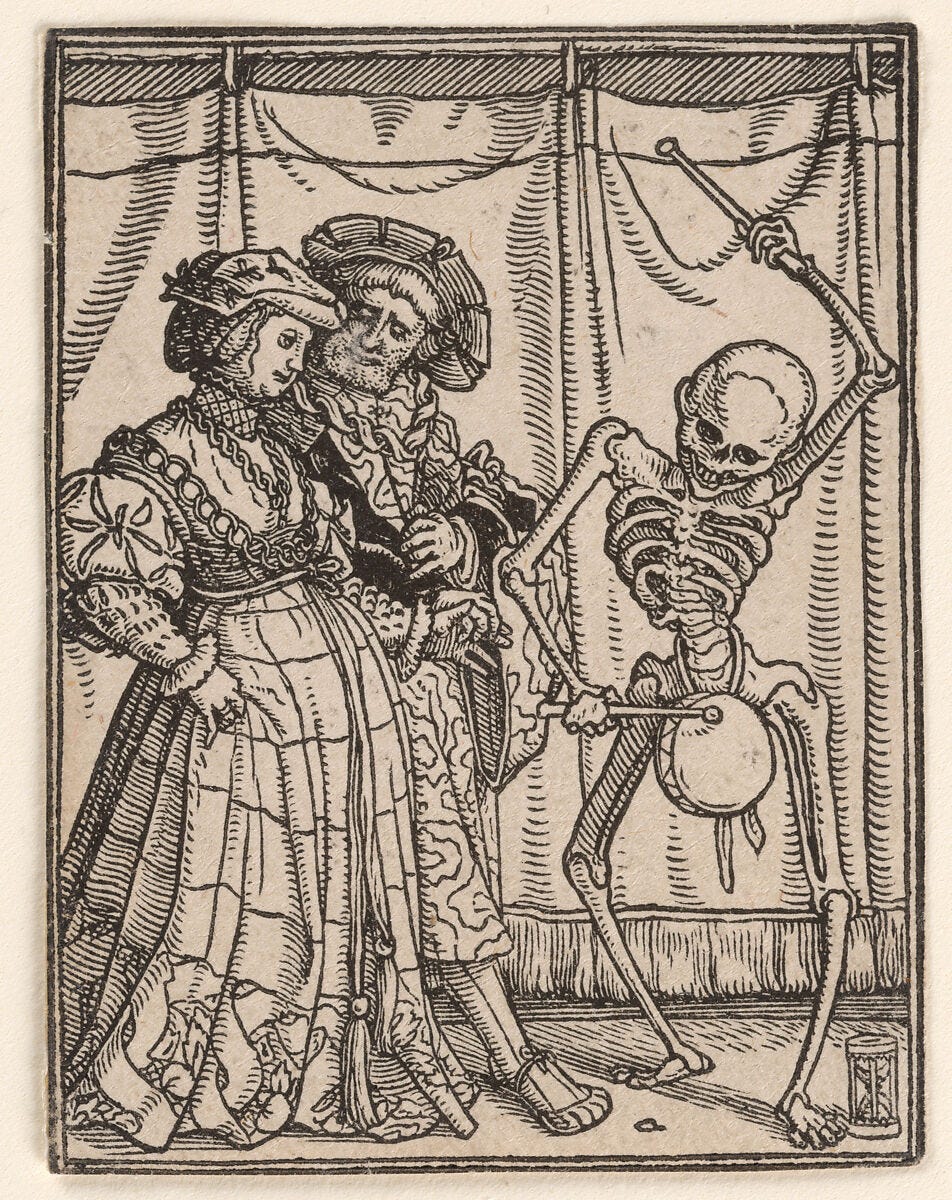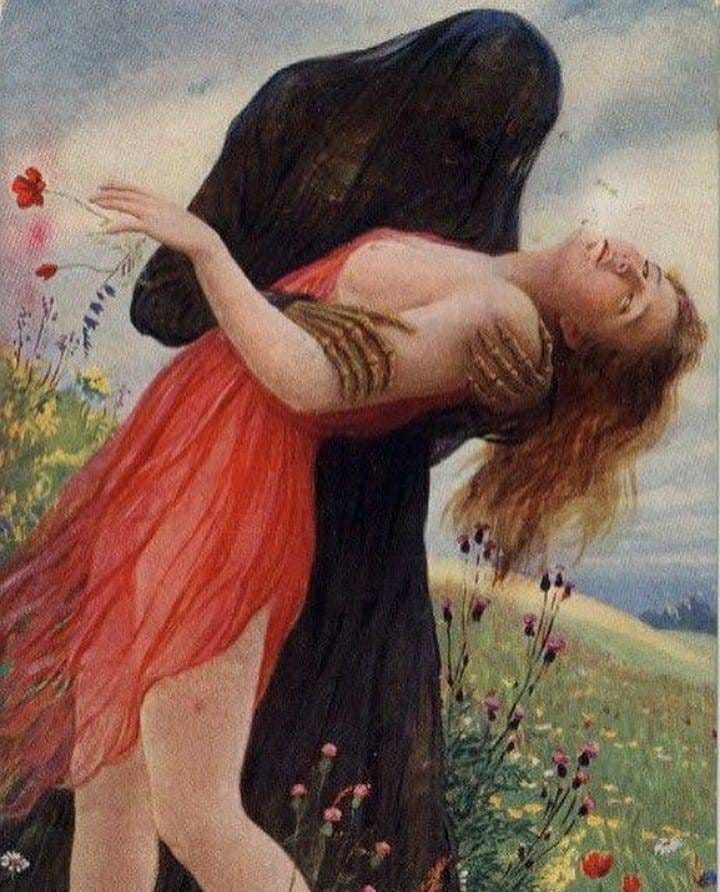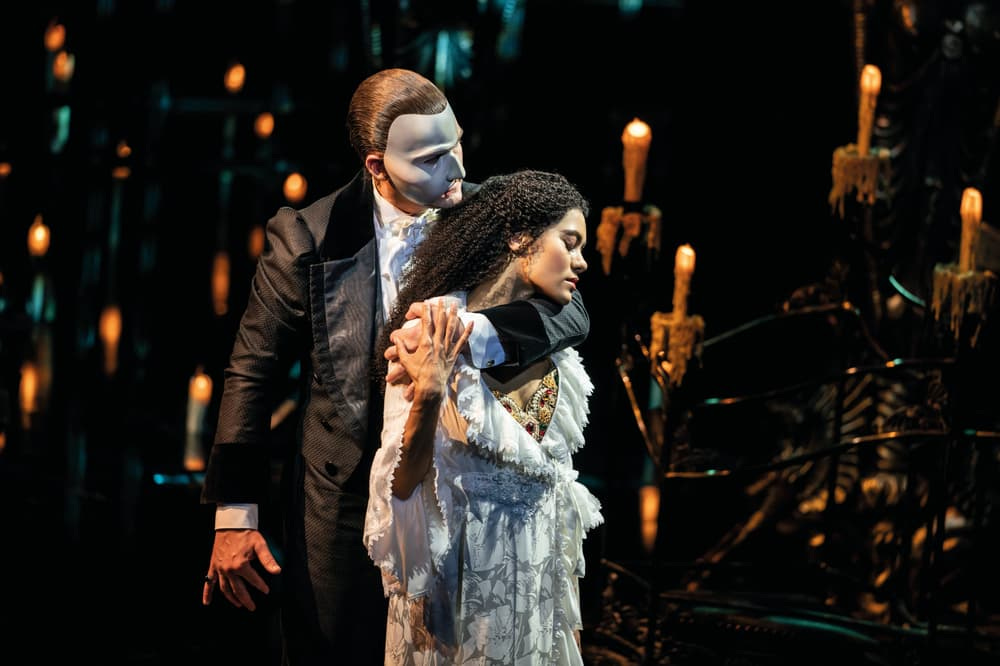Image: The Noblewoman from the Dance of Death by Hans Holbein the Younger, 1538
There is a dark side of Carnival. There are themes I have neglected in this devotional because, like sin, I just don’t want to deal with them. One of those themes is the grotesque. There are costumes that are meant to be exagerrated, garish, obscene, hideous. The Russian literary critic Mikhail Bakhtin has whole theories about the use of the grotesque in Carnival culture and carnivalesque literature. I just can’t stomach it enough to read it.
But I don’t feel that way about death. The role of death in Carnival is clear to me and, unlike imagery of the grotesque, imagery of death can be quite beautiful.
The Danse Macabre is an artistic motif that comes out of the Late Medieval Age. While skeletal images have long represented death in art, the Danse Macabre came out of a time in Europe when plague, famine and war were rampant and death probably did feel very near. The dancing skeletons are momento mori, meaning, they are meant to remind us that the dead were once living and we the living are much closer to the grave than we realize. They serve as both a warning and a motivation to live life more fully.
The Danse Macabre by Camille Saint-Saëns, 1874
Image by Niklaus Manuel Deutsch, 16th century
Death and the Maiden is a related motif that is perhaps even older than the Danse Macabre. Looking all the way back to Greek mythology, what is the story of Hades and Persephone but a story about death and a maiden?
The female body is often used in art to embody ideas like justice, virtue, purity. The maiden depicted next to death is always young and fleshy and rosy cheeked. She - no matter who she is - is a proxy for all human youth. Death is almost always male and often presented in a romantic pose, embracing the maiden or sitting on her bed. The romantic image of the maiden being pursued by death, carries a grim message for young women. Sex and death are related; pregnancy has been a dangerous and even deadly experience for women across time. Gothic imagery strikes a chord in women for a reason.
But really, this message is for all of us, women and men, young and old.
Death and Maiden by Adolf Herring, 1900
We may even imagine that the virgins in the 1648 poem “To the Virgins, to Make Much of Time” by Robert Herrick are maidens. But certainly, there are young men who feel the message is aimed that them as well?
Gather ye Rose-buds while ye may,
Old Time is still a-flying:
And this same flower that smiles to day,
To morrow will be dying.
The glorious Lamp of Heaven, the Sun,
The higher he's a getting;
The sooner will his Race be run,
And neerer he's to Setting.
That Age is best, which is the first,
When Youth and Blood are warmer;
But being spent, the worse, and worst
Times, still succeed the former.
Then be not coy, but use your time;
And while ye may, go marry:
For having lost but once your prime,
You may forever tarry.
As Carnival is a celebration of life, and death is a part of life, macabre costumes have always been a part of Carnival. We see it in Orfeu Negro, and we will see it again tomorrow in the short story the Masque of the Red Death, and again in a quote from the Phantom of the Opera.
Is all of this making Carnival sound like a second Halloween? Because it does to me. I think of Halloween as a Carnival of the soul and the pre-Lenten Carnival as a Carnival of the flesh. The two don’t interact much on the liturgical calendar and they have different histories; Halloween comes from a Celtic tradition while Carnival has its deepest roots in Roman culture. But both celebrations occur during liminal periods of the year, in the transition from one season to the next. They involve mummery, processions, and consumption, and both force us to consider death from new perspectives.









In a word - magnificent. And thank you for including one of my very favorite poems. I quote lines from it nearly every day and have since I memorized it in the first bloom of my “maidenhood!” It’s all too close for comfort now.
Creepy but fascinating material. It's interesting to see how cultures have invited death to the party.